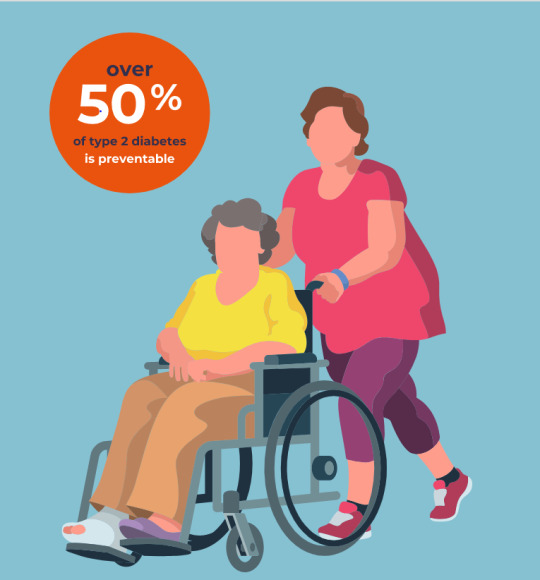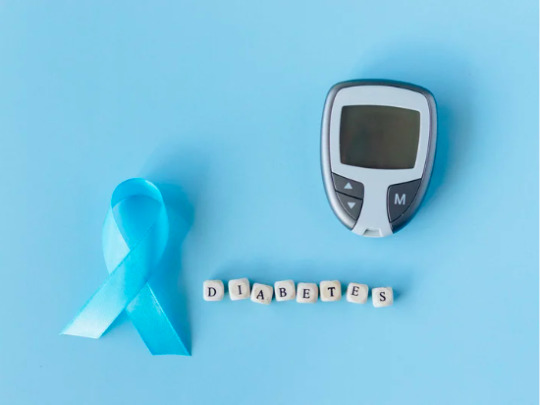#t2dm
Note
I saw a comment on your blog that says 'the way you eat does not cause diabetes'...are you able to expand on that or provide a source I could read? I've been told by doctors that my pre-diabetes was due to weight gain because I get more hungry on my anti psychotics and I'd like to fact check what they've told me! Thank you so much!
Pre-diabetes was rejected as a diagnosis by the World Health Organization (although it is used by the US and UK) - the correct term for the condition is impaired glucose tolerance. Approximately 2% of people with "pre-diabetes" go on to develop diabetes per year. You heard that right - TWO PERCENT. Most diabetics actually skip the pre-diabetic phase.
There are currently no treatments for pre-diabetes besides intentional weight loss. (Hmm, that's convenient, right?) There has yet to be evidence that losing weight prevents progression from pre-diabetes to T2DM beyond a year. Interestingly, drug companies are trying to persuade the medical world to start treating patients earlier and earlier. They are using the term “pre-diabetes” to sell their drugs (including Wegovy, a weight-loss drug). Surgeons are using it to sell weight loss surgery. Everyone’s a winner, right? Not patients. Especially fat patients.
Check out these articles:
Prediabetes: The epidemic that never was, and shouldn’t be
The war on ‘prediabetes' could be a boon for pharma—but is it good medicine?
Also - I love what Dr. Asher Larmie @fatdoctorUK has to say about T2DM and insulin resistance, so here's one of their threads I pulled from Twitter:
1️⃣ You can't prevent insulin resistance. It's coded in your DNA. It may be impacted by your environment. Studies have shown it has nothing to do with your BMI.
2️⃣ The term "pre-diabetes" is a PR stunt. The correct term is impaired glucose tolerance (or impaired fasting glucose) which is sometimes referred to as intermittent hyperglycemia. It does not predict T2DM. It is best ignored and tested for every 3-5yrs.
3️⃣ there is no evidence that losing weight prevents diabetes. That's because you can't reverse insulin resistance. You can possibly postpone it by 2yrs? Furthermore there is evidence that those who are fat at the time of diagnosis fair much better than those who are thin.
4️⃣ Weight loss does not reverse diabetes in the VAST majority of people. Those that do reverse it are usually thinner with recent onset T2DM and a low A1c. Only a tiny minority can sustain that over 2yrs. Weight loss does not improve A1c levels beyond 2 yrs either.
5️⃣ Weight loss in T2DM does not improve macrovascular or microvascular health outcomes beyond 2 years. In fact, weight loss in diabetics is associated with increased mortality and morbidity (although it is not clear why). Weight cycling is known to impacts A1c levels.
6️⃣ Weight GAIN does NOT increase the risk of cardiovascular OR all causes mortality in diabetics. In fact, one might even go so far as to say that it's better to be fat and diabetic than to be thin and diabetic.
Dr. Larmie cites 18 peer reviewed journal articles (most from the last decade) that are included in their webinar on the subject, linked below.
#diabetes#t2dm#type 2 diabetes#prediabetes#weight science#weight stigma#fat liberation#fat acceptance#inbox
29K notes
·
View notes
Text
To analyse a cluster of seven difficult-to-manage T2DM patients with chronic kidney disease (CKD) Stage 3B (eGFR 30–44mL/min), by FreeStyle Libre Pro CGM.
0 notes
Text
Type 2 Diabetes Demystified: Diagnosis, Causes, and Treatments Explained
Introduction:Type 2 diabetes is a chronic condition that affects millions of people worldwide. As a family medicine physician, it’s important to understand the diagnosis, causes, and treatment options for this condition to provide effective care for your patients. In this post, we will discuss what type 2 diabetes is, how it is diagnosed, the common causes, and the different treatment options…

View On WordPress
0 notes
Text
By addressing the root cause and designing preventative strategies, insulin resistance can be overcome
#insulin#insulinresistance#sugar#sugarfree#sugarrush#sugarhigh#sugaraddict#evilsofsugar#diabetes#sugarfreediets#stress#anxiety#sugaraddiction#nosugar#depression#sugarcrash#type2#T2DM#diabetesmanagement#chronicdiseease#brisbanenaturopath#brisbaneDietician#brisbanenutrionist#addedsugar#reversediabetes#improveinsulin#bloodsugar#bloodsugars#functionalmedicine#wellness
0 notes
Text
Over of 50% of type 2 diabetes is preventable.

DISCOVER DIABETES. Too few people could spot the signs of diabetes in their own families. Test to discover Diabetes to find out if you could spot it in yours.
#Test2discoverDiabetes#International Diabetes Federation (IDF)#world diabetes day#14 november#take the test#T2DM#type 2 diabetes
0 notes
Note
please reblog this taylor swift prompt list so i can send them to you. i don't want to write them but i DO want you and kelsey to xD
As you wish! @wearingaberetinparis will be interested as well 👀
#I'm in last 72 hours of Uni#so send over next few days#I might use this as a break#or celebration at end#because I swear if I have to type T2DM one more time#I'm going to scream#athena was asked#GAME TIME
1 note
·
View note
Text
Diabetes Center in Korba| Dr. Ashish Agrawal
Experience superior care for T1DM and T2DM at the top Diabetes Center in Korba. Take control of your diabetes management today – book an appointment and embark on your path to better health. Call now: 7389374502
#diabetes center in Korba#diabetes center korba#best diabetes center in Korba#t1dm diabetes center in Korba#t2dm diabetes center in Korba#type 2 diabetes treatment in korba#type 1 diabetes treatment in korba#best diabetes doctor in korba#best diabetologist doctor in korba#best diabetes treatment in korba#diabetic and cardio center korba#diabetes specialist korba#diabetic & cardio center korba#diabetes doctor in korba
0 notes
Text
Scientists Develop Novel Machine Learning Models to Predict Comorbidities at an Early Stage of Type 2 Diabetes Mellitus

Type 2 Diabetes Mellitus (T2DM), a recognized risk factor for heart failure (HF) and cardiovascular illnesses such as chronic kidney disease (CKD), was diagnosed in an estimated 537 million people worldwide.
In order to manage CKD and HF in individuals with early stages of T2DM, a complete treatment strategy is preferred. Early and better detection of these disorders can improve results. But recent research indicates that T2DM patients’ CKD and HF are not properly recognized, which results in increased rates of disease progression and a worse prognosis.
Researchers at AstraZeneca and Ono Pharmaceuticals created a model that could predict the likelihood that individuals with T2DM who had no prior history of CKD would develop CKD/HF. This study is a major step toward early and better diagnosis of CKD and HF in patients with T2DM.
Continue Reading
#bioinformatics#type 2 diabetes#chronic kidney disease#heart failure#machinelearning#health#100daysofcode#scicomm#medcomm#stem#science news
43 notes
·
View notes
Note
Do you think since beta cells and alpha cells have opposite jobs (insulin lowers blood sugar and glucagon increases it) they fought over this before? -🧀
Fought over what, I’m so sorry I’m just confused 😭
I would like to say that I absolutely see them in a sort of stereotypical sibling-esque, even though they aren’t related (I personally don’t think any of the cells are, unless it’s stated in canon). They will absolutely, fight over things, especially the blood sugar, but will be there for each other, at least before the body became diabetic. Their relationship started going to shit once the body started developing T2DM.
Also, side note, I personally think the alpha cells look like this

(The body stuff, hair, eyes, etc, can all change, I just used this as an example)
3 notes
·
View notes
Text
I think I’m the well-intended trouble maker of my class… because I do not hold back in reviews when I bring up systemic concerns.
Me: “this isn’t related to any specific incident or physician mentor, but the language used to describe the ‘importance’ of practicing physical exams on peers feels coercive to me.”
Me: “There needs to be clearly defined avenues to opt out of peer physical exams”
Me: “The attitude taken by the physicians regarding peer physical exams is dismissive of students that may have illnesses or disabilities that they are not ready or feel safe disclosing to the class or their partner.”
Me: “Our discussion on T2DM related heavily to lifestyle factors and ‘obesity,’ and while I understand that ‘obesity’ is the current appropriate medical terminology and excess abdominal/visceral adiposity plays an active role in blood glucose dysregulation, I would appreciate some acknowledgement about the weight stigma these patients receive and the inherent bias related to the etymology of the term ‘obesity.”
Just to name a few.
4 notes
·
View notes
Text
I'm just going to post the plan for Community-Acquired PNA for a pt I had today. Basically he came in with worsening SOB and non-productive cough. CXR showed a LLL PNA. He was started on ceftriaxone (covers gram negatives like strep pneumoniae) and azithromycin (covers atypicals like legionella). He also got benzonatate for cough and albuterol nebulizer. He got significantly better. His COVID, flu, urine legionella and strep pneumo antigens were negative, his blood cultures were negative x36 hours. So he was discharged on oral cefdinir. Since ceftriaxone covered his PNA for the first 2 hospital days, the cefdinir is a continuation so you count the first 2 days of abxs as covering for his PNA. So I discharged him on three days PO cefdinir for a total 5-day abx course. He will need PCP f/u for a CXR in 4 to 8 weeks to ensure resolution of the PNA. This is the note:
83-year-old male with past medical history of atrial fibrillation on Eliquis, CAD, hypertension, type 2 diabetes mellitus, and hypothyroidism came to the hospital secondary to shortness of breath and worsening cough, found to have left lower lobe community-acquired pneumonia.
Worsening cough and progressively worsening dyspnea on exertion in the setting of left lower lobe community-acquired pneumonia
-ceftriaxone
-azithromycin
-blood cultures - no growth x36 hours
-incentive spirometer
-acapella device
-nebulizer as needed
-PT/OT as tolerated
-COVID-19 swab negative
-influenza A+B negative
-urine legionella and strep pneumo negative
-low threshold to discuss with lab and order RSV given exposure to granddaughter 1-2 days prior to acquiring illness
-will need repeat chest x-ray in 4-8 weeks to ensure resolution of pneumonia
-d/c home on cefdinir x3 days for total of 5-day abx course; PCP f/u outpatient
Failure to thrive in the setting of loss of appetite due to pneumonia
Hypovolemic hypochloremic hyponatremia due to poor oral intake
-management of infectious process as mentioned above
-encourage oral intake
-trend sodium levels
Hypertension
Dyslipidemia
Atrial fibrillation on Eliquis
Coronary artery disease
-continue Eliquis
-continue statin
-continue carvedilol
-continue aspirin
Hypothyroidism
-continue Synthroid
T2DM
-HbA1c 6.1%
-hypoglycemia protocol
-hold PO diabetes meds
-start lispro sliding scale ACTIDHS
-diabetic diet
-CBG ACTIDHS
-Outpt PCP f/u
2 notes
·
View notes
Link
1 note
·
View note
Text
“At the end of the day, we can endure much more than we think we can.”

Behind this photo was me waking up at 3 am to be at the hospital by 4 am. I haven't eaten breakfast nor drank coffee. I am glad to have the time to accompany my mother for her HemoDialysis. I stayed awake and just read.
HD was done around 9 am. Grateful for a benign dialysis today. After that, I paid for my mother's procedure scheduled later at 1 pm. She needs to undergo an AV Duplex scan which costs ₱ 9400.
Went home to eat porridge with tofu then went out again. Bought my mother's medicine (for hypertension, T2DM, Heart Failure, and Chronic Venous Insufficiency) which cost me ₱ 4190.
It can be draining — mentally, physically, and financially. But we'll carry on. In time, everything will be okay.
0 notes
Text
The Health Benefits of Gymnema Sylvestre known as the Sugar Destroyer
#sugar#sugarfree#sugarrush#sugarhigh#sugaraddict#worldhealthday#guthealth#evilsofsugar#diabetes#sugarfreediets#stress#anxiety#sugaraddiction#nosugar#depression#sugarcrash#Obesity#type2#T2DM#diabetesmanagement#inflammation#chronicdiseease#brisbanenaturopath#brisbaneDietician#brisbanenutrionist#curcumin#addedsugar#functionalmedicine#naturopath#health
0 notes
Text

The International Diabetes Federation (IDF) estimates that as many as 212 million people, or half of all adults currently living with diabetes, are undiagnosed. Most of these have type 2 diabetes.
IDF has created an online diabetes risk assessment which aims to predict an individual’s risk of developing type 2 diabetes within the next ten years. The test is based on the Finnish Diabetes Risk Score (FINDRISC) developed and designed by Adj. Prof Jaana Lindstrom and Prof. Jaakko Tuomilehto from the National Institute for Health and Welfare, Helsinki, Finland.
The test takes only a couple of minutes to complete. It is a quick, easy, and confidential way to find out your risk of developing type 2 diabetes.
#risk assessment tool#Take the test#Finnish Diabetes Risk Score (FINDRISC)#International Diabetes Federation (IDF)#diabetes mellitus#type 2 diabetes#individual’s risk#T2DM
0 notes
Text
Semaglutide: Transforming Diabetes and Obesity Management with Injectable and Oral Innovations
Introduction
Semaglutide, a glucagon-like peptide-1 (GLP-1) receptor agonist, has become a pivotal player in the management of type 2 diabetes mellitus (T2DM) and obesity. Its availability ¿Cómo funciona semaglutida? in both subcutaneous injection and oral tablet formulations has revolutionized treatment options for patients and healthcare providers alike. This article aims to provide an in-depth exploration of semaglutide's subcutaneous injection and oral tablet formulations, including their mechanisms of action, clinical applications, dosing considerations, safety profiles, and future prospects.
Mechanism of Action
Semaglutide exerts its therapeutic effects by mimicking the action of endogenous GLP-1. Through GLP-1 receptor activation, it enhances insulin secretion in a glucose-dependent manner, suppresses glucagon release, delays gastric emptying, and promotes satiety. These mechanisms collectively contribute to improved glycemic control and weight loss, making semaglutide an effective treatment option for T2DM and obesity.
Clinical Applications
Both the subcutaneous injection and oral tablet formulations of semaglutide are approved for the treatment of T2DM. Additionally, the subcutaneous injection formulation is indicated for obesity management. Clinical trials have demonstrated the efficacy of semaglutide in lowering HbA1c levels, reducing body weight, and improving cardiovascular outcomes in patients with T2DM, underscoring its therapeutic versatility and clinical utility.
Dosing Considerations
The recommended dosage regimens for semaglutide vary depending on the formulation and indication. The subcutaneous injection is typically administered once weekly, while the oral tablet is taken daily. Dose adjustments may be necessary based on individual patient factors, such as renal function, concomitant medications, and treatment response, to optimize therapeutic outcomes.
Safety Profiles
Semaglutide therapy may be associated with gastrointestinal side effects, such as nausea, vomiting, and diarrhea, particularly during the initial titration period. Rare but serious adverse events, including pancreatitis and thyroid neoplasms, have also been reported. Clinicians should be vigilant for these complications and educate patients on potential risks, implementing appropriate monitoring protocols as needed.
Clinical Trials and Real-World Evidence
Numerous clinical trials have evaluated the efficacy and safety of semaglutide in patients with T2DM and obesity, providing robust evidence supporting its use in clinical practice. Real-world studies have further corroborated these findings, demonstrating consistent improvements in glycemic control, weight reduction, and cardiovascular risk factors with semaglutide therapy.
Pharmacokinetic Properties
Semaglutide exhibits linear pharmacokinetics, with peak plasma concentrations reached within hours of administration. The subcutaneous injection formulation has a longer duration of action and may offer more consistent plasma levels compared to the oral tablet. Understanding the pharmacokinetic properties of semaglutide is essential for optimizing dosing regimens and ensuring treatment adherence.
Patient-Centered Care
Incorporating patient preferences and individualized treatment goals is paramount in semaglutide therapy. Shared decision-making processes should consider factors such as route of administration, lifestyle considerations, and treatment preferences, fostering collaborative partnerships between patients and healthcare providers to achieve optimal treatment outcomes.
Future Directions
The future of semaglutide therapy holds promise for further innovations and advancements. Ongoing research efforts are exploring novel formulations, delivery systems, and expanded therapeutic indications beyond T2DM and obesity. These developments may pave the way for personalized treatment approaches and address unmet needs in the management of metabolic disorders.
Conclusion
Semaglutide's subcutaneous injection and oral tablet formulations represent significant advancements in the treatment of T2DM and obesity. With their proven efficacy, favorable safety profiles, and potential for personalized treatment strategies, semaglutide offers patients and healthcare providers valuable options for achieving optimal metabolic control and improving long-term health outcomes. As research continues to uncover new insights and innovations, semaglutide remains at the forefront of metabolic medicine, shaping the future of diabetes and obesity management.
0 notes